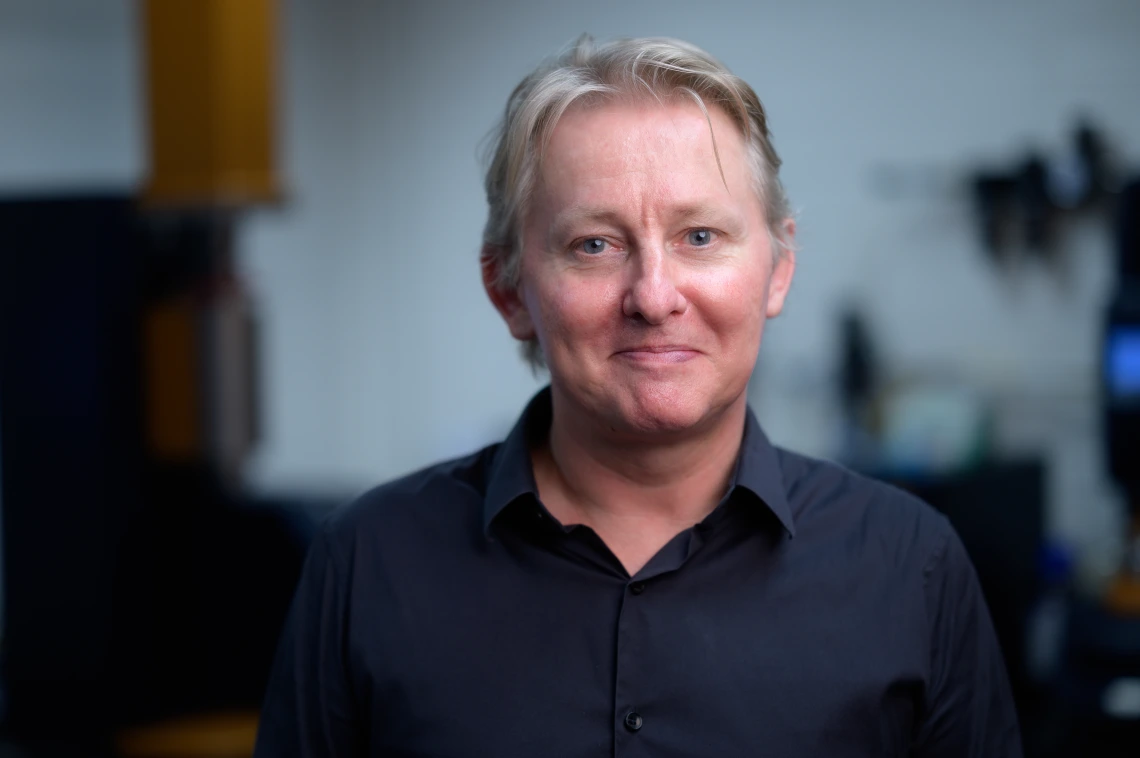Pierre Lucas Attains Fellowship in the American Ceramic Society
The materials science and engineering professor is recognized internationally as a glass expert.

Pierre Lucas’ work with chalcogenide glasses advances infrared optics as well as fundamental scientific understanding.
The American Ceramic Society selected Pierre Lucas, professor of materials science and engineering, who has a joint appointment as an optical sciences professor, as a member of its 2023 Class of Fellows. ACerS Fellows are outstanding contributors to the field of ceramic sciences, or society members who have distinguished themselves through service to the organization.
Lucas is a perfect fit for both criteria, said Lisa Klein, an ACerS Fellow who nominated him for the award. He has held every leadership position in the society’s glass and optical materials division and organized meetings and conferences for over 15 years. Lucas is also a foremost expert in glass, Klein said.
“The field of light interaction with glass is critically important for a variety of industries. … Pierre Lucas has devoted his career to observing, measuring and understanding these interactions,” said Klein, department chair of materials science and engineering at Rutgers University.
Klein and Lucas first met two decades ago when they reviewed award nominations together for the National Science Foundation.
International Renown
Lucas earned his bachelor’s in chemistry from the University of Rennes in France and directed the International Associated Laboratory for Materials and Optics at the French National Center for Scientific Research for eight years. He earned his doctorate in physical chemistry from Arizona State University in 1999 and joined the University of Arizona faculty in 2001.
He became fascinated with glass while completing his doctoral work.
“It’s because you can shape it. You can draw it into fibers – compress them, heat them, press them into any shape you want,” he said, then added. “It sounds very easy when I say it like that, but it’s not. There’s a complicated science associated with controlling all that.”
In exploring that science, which involves heating and cooling glass to specific temperatures using precise time parameters, Lucas has made a particular impact in chalcogenide glasses. These glasses appear opaque under ordinary light conditions but are transparent when viewed with infrared light.
Infrared light, invisible to the human eye, is used in optical devices to collect heat signatures. For example, infrared cameras can image people at night, and high-end vehicles are now equipped with infrared sensors that detect pedestrians or animals on the road miles in advance.
Lucas’ research has led to new optical devices made with chalcogenides. He has developed novel fibers and films and designed glasses that operate further into the infrared range. His work has also advanced fundamental understanding of glass structure and behavior, particularly chalcogenide glasses.
“It is clear to me that professor Lucas has earned an international reputation for his work on chalcogenides,” said Klein.
Lucas has authored a textbook, more than 100 peer-reviewed publications and nine book chapters in the field of materials science. He is an associate editor for the Journal of American Ceramic Society, has been recognized with three teaching awards and has been an invited professor in residence at several international universities. ACerS Fellowship is a rewarding testament to these achievements, he said.
“The other Fellows are leaders in the field. It’s satisfying to be recognized as a member of this distinguished group.”

